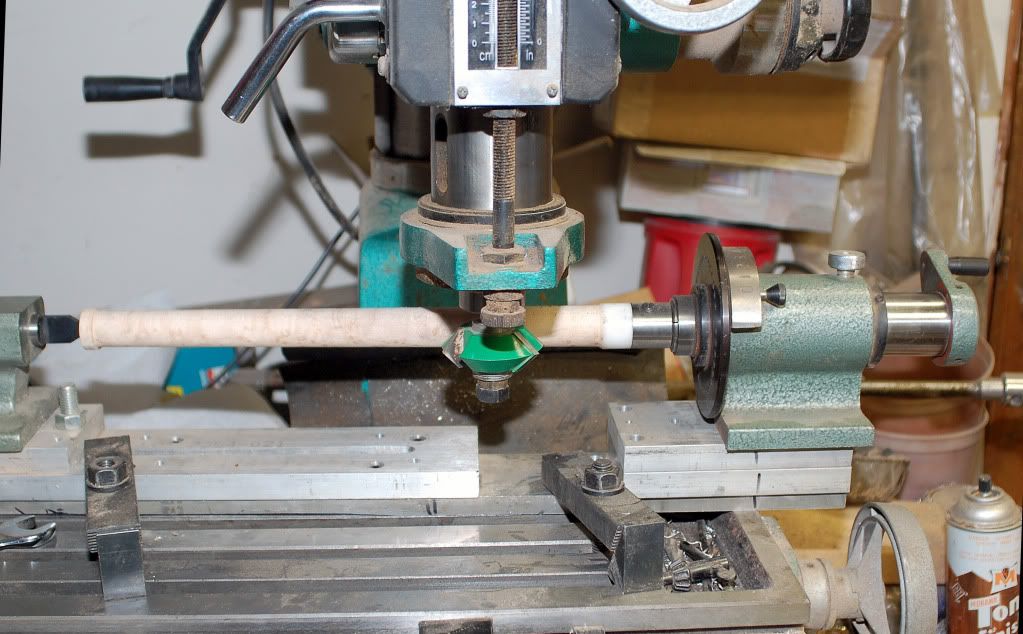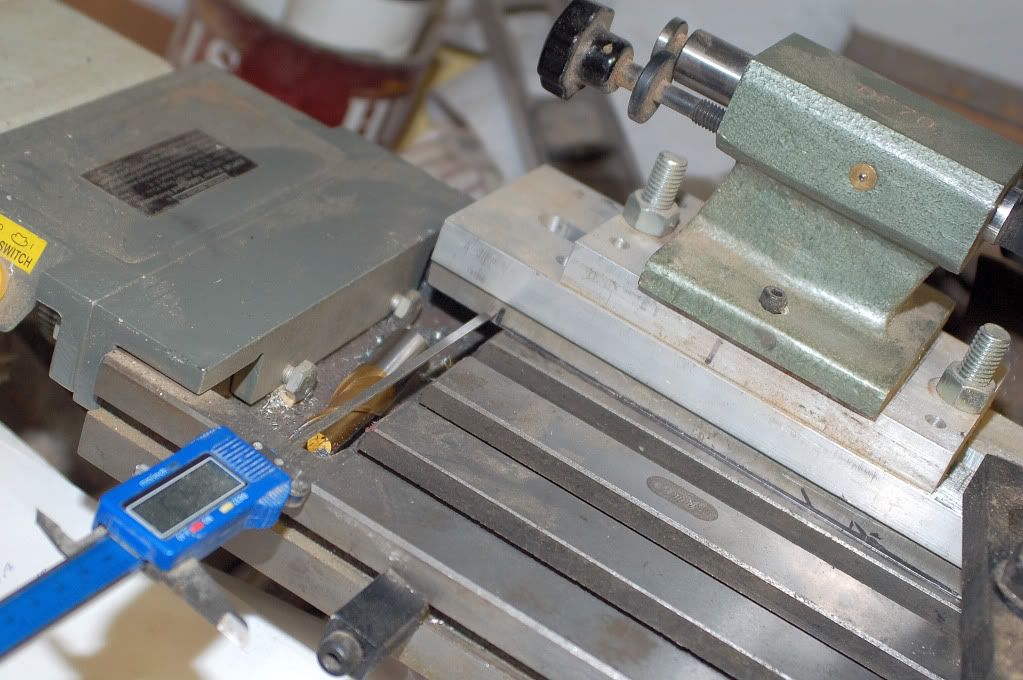That is a great theorem, another one is Trialbyerrorium theorem. Start around 1 degree angle and work up from there until you reach desired look. When you have a few test pieces under your belt it will all make sense.
Actually, I believe you have it just exactly backward. The way I determined the correct angle so as to have the points touch each other at the A-joint on a 4 point cue is to take a tapered dowel with the exact final measurements of one of my cues. Say it is 1 inch at the A and .850 at the joint. On my jig, that pivots exactly where the A-joint would be, I route a V-groove to the exact center of the prong at the A-joint and with the prong off-set at a oblique angle. This will make a short but deep V-groove. Now I just start moving the joint end of the prong more towards straight angle and make another cut which will make the point the same depth at the A-joint but now longer in length. I do this again and again until I finally have the length of point that I desire and I mark this angle down and every prong I make in the future, immaterial as to it's girth, will have the points come out exactly at this predetermined length. I marked down the exact distance from the end of my Table to a spot on the jig so that when I mount the jig onto the table I set it up at this exact distance. On my mill and jig this happens to be at .517 for points touching at the back and 9.500 in length. I've got other distances marked down so that I can make points 8.0, 8.5, 9.0, 9.5 and 10.0 inch. As has already been stated, to make the V-groove go to the exact center of the prong, only two grooves can be cut at a time and they must be opposing each other and then the point glued back in and the groove filled so that the prong will be stable enough so as to be able to cut the remaining two V's.


Dick
Sorry!!! Posted under wrong thread.

